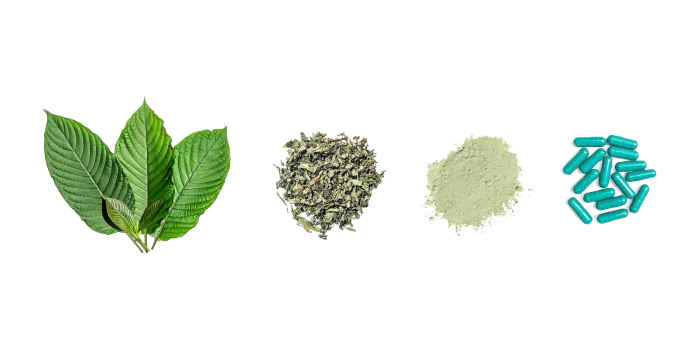Kratom’s Legal Status in Ohio
Right now, kratom is legal and unregulated in Ohio. Most US states haven’t bothered to ban it, though a few have put regulations in place that help guarantee product purity.
In recent years, Ohio has tried to ban kratom.
Amid a nationwide opioid crisis, the Ohio Board of Pharmacy (or BOP) attempted to ban kratom back in March 2019, voting to list the plant as a controlled substance alongside heroin and LSD.
The BOP cited multiple studies that suggested kratom users can develop a dependency on the plant; it also drew attention to six deaths within Ohio that listed kratom as the primary cause of death.
However, the Ohio Department of Health documents indicated that none of these six deaths were conclusively caused by kratom alone. Other, more dangerous drugs were also at play (both prescribed and illicit), along with certain preexisting medical conditions.
Not long after the BOP cast their votes to ban kratom, the American Kratom Association (AKA) began working quickly to overturn their decision. The AKA organized a public outreach campaign, which resulted in thousands of mail-in and in-person speakers who shared their positive testimonials about kratom.
These efforts by kratom enthusiasts worked, and in August of 2019, the scheduling was officially delayed.
In 2021, HB236 was introduced that would regulate kratom, but with one crucial detail — the BOP can’t adopt rules that include kratom as a controlled substance (Sec. 3719.41.C). This bill has passed the House.
If this bill becomes law as is, the following restrictions will apply to kratom sales:
- To process kratom, you have to obtain a kratom processing license from the Director of Agriculture and pay an annual fee
- All kratom products must be lab tested
- The Department of Agriculture must conduct regular random inspections to verify compliance with the new legislation.
- Kratom products must be properly labeled.
- Kratom products cannot contain dangerous non-kratom substances or synthetic alkaloids.
- Kratom products cannot contain more than 2% of 7-hydroxymitragynine
- Incompliance leads to losing the kratom processing license or minor misdemeanor (a fine of up to $150) for the first offense

Why is Kratom Important?
Why is it crucial kratom remain accessible to the public?
Opioids are substances that work through the nervous system along with specific receptors in the brain to reduce the sensation and intensity of pain. These substances are highly addictive and, in turn, are highly abused. Your tolerance for opioids builds quickly, often pushing an individual to take more than what is recommended.
Once you start taking too much, respiratory complications usually result in failure and death.
Data from the CDC’s website indicate an estimated 100,306 drug overdose deaths in the US in 12 months, ending in April 2021. It also stated that overdose caused by opioids increased to 75,673 in that same 12 month period.
Around 73% of drug overdoses in 2019 were due to opioids, out of 70,630 overdoses. So overdose caused by opioids came in at about 51,559 that year.
Going back to 2018, drug overdoses caused 67,367 deaths in the US. Among these overdoses, 46,802 involved opioids.
These numbers are staggering, and when comparing the data throughout the years, the future doesn’t look so bright. With so many opioid-related deaths, you would expect more people to turn to natural, effective alternatives like kratom. This is exactly what is happening.
Kratom has long served many as a safe and natural way to relieve physical pain, increase energy, and manage various health issues, including anxiety and insomnia.
Many individuals have even found success using kratom as an alternative to opioids, such as prescription painkillers. In fact, kratom helps many people overcome opioid addiction.

Is Kratom Dangerous?
Kratom is a safe and effective solution for chronic pain and offers many other benefits and effects, but it also does not cause the dangerous health complications that opioids are linked to.
Kratom can be addictive but not like opioids. The addiction is much easier to overcome — without the risk of overdose.
How to Use Kratom Safely
Of course, misuse of any substance can cause problems. There are side effects associated with kratom, but these are usually minor and go away as it wears off. Nausea, headaches, dizziness, and constipation are the most common.
That said, here are a few tips on staying safe when using kratom:
- Never mix kratom and other medications — especially opioids. Kratom can interact with certain drugs, causing severe adverse reactions.
- Take breaks from kratom; don’t use it every day, and only use the amount you need.
- Only buy kratom from reputable vendors.
If you’re new to kratom, do some research before jumping in. Kratom comes in different strains, and they all have different enough effects. Plus, it’s unique because the results are also dose-dependent. Low doses are generally more stimulating, while higher doses tend to be more sedating, but again, the strain will come into play. To find the right amount, check out our dosing guidelines.

Conclusion: Kratom’s Future in Ohio
Though research is minimal, kratom gives us enough reasons to trust that responsible use comes with low risk.
Regulating kratom can be bad or good — too strict of controls, and people don’t have access to what they need. No regulations mean it’s up to the consumer to ensure products are safe. The AKA makes this task easier.
Whether Ohio takes this step or not, make sure you stay up-to-date on local laws and stick with reputable vendors. Even if kratom is regulated, it doesn’t mean buying it is risk-free.

